KNOW the CHARACTERISTICS of the Different Shape of the Neck Profile for Electric Guitar: U, C, D, V, and Asymmetrical.
When we talk about a neck profile, we mean the size and shape of the neck at the back. The neck profile will determine the way the neck feels in our hand. So the decision to opt for one profile or another is mostly personal, although each type of profile has its own characteristics.
With a cross-sectional image of the neck, the different types of profiles can be easily distinguished.

Wider or thicker necks provide a full-bodied sound with more sustain, due to the density and rigidity of the neck. But it can present difficulties for guitarists with small hands.
On the other hand, for players with large hands, a neck with a wide profile may be more comfortable than one with a thin profile. This type of profile can also be more comfortable when playing chords.
Guitar Neck Shape: U Neck Profile
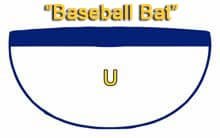
This type of neck would be the so-called U-shaped neck, typical of the first Fender Telecaster models of the 50s. Also known as the “Baseball Bat” neck. Thick profile resembling the shape of a U with rounded edges and a nearly flat center back. Very similar in shape to the neck of a classical guitar. This type of profile is not easy to find in electric guitars these days.
D Neck Profile
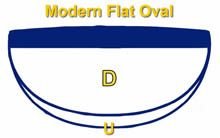
However, the so-called slim U profile is very common. Although in my opinion this type of profile corresponds to the classic D profile. Also called Modern Flat Oval, in a more technical language. This type of neck is similar to the U-shaped neck, but with a thinner profile, which favors faster fingering, and is generally accompanied by a flatter fingerboard.
Guitar Neck Shape: C Neck Profile
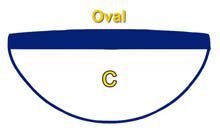
One of the most popular neck profiles is the C profile. Also called Oval and quite similar in width to the D shape, but presenting a more rounded and uniform curvature between both sides of the fretboard. This form is usually quite comfortable and versatile, as it works well in any playing style. This profile is typical of Fender Stratocaster models from the early 1960s.
V Neck Profile
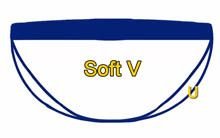
Also from the same era and the same Fender model is the Soft V profile, popularized by Eric Clapton. This profile is similar to the thick U-shaped profile, but acquiring the shape of a soft V.

Within the V profiles we have the Hard V profile. But this type of profile would be better to try calmly before making a purchase.
There are also mixed or compound neck profiles, which have one type of profile in the upper part of the neck, and another type of profile in the lower part.
Asymmetric Neck Shapes
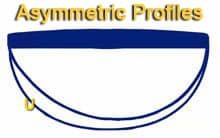
Some guitarists opt for asymmetrical profiles, with a different profile on each side of the neck. This type of profile is customized by luthiers. So my advice is that if you want to try a profile of this type, leave the work to a professional.
There is a lot of paranoia about the neck profiles. The same profile can feel very different depending on the guitar model, its scale length or manufacture. So the decision to look for another type of profile is when we really have serious fatigue problems in the hand, or complications in the execution.
If we have large hands, a slim profile may not fill the hand enough and fatigue can set in quickly. On the other hand, a very thick neck can complicate the playing of some guitarists.
The most used profiles at present are D and C. So it is most likely that you will not have problems with these types of profiles. But for the few who may have a problem with these profiles, they can try wider others.
Although given the low sales volume of wide profiles, there is not a wide assortment of this type of profile, unlike the wide range of models with D or C profile.
Other Elements of the Electric Guitar
